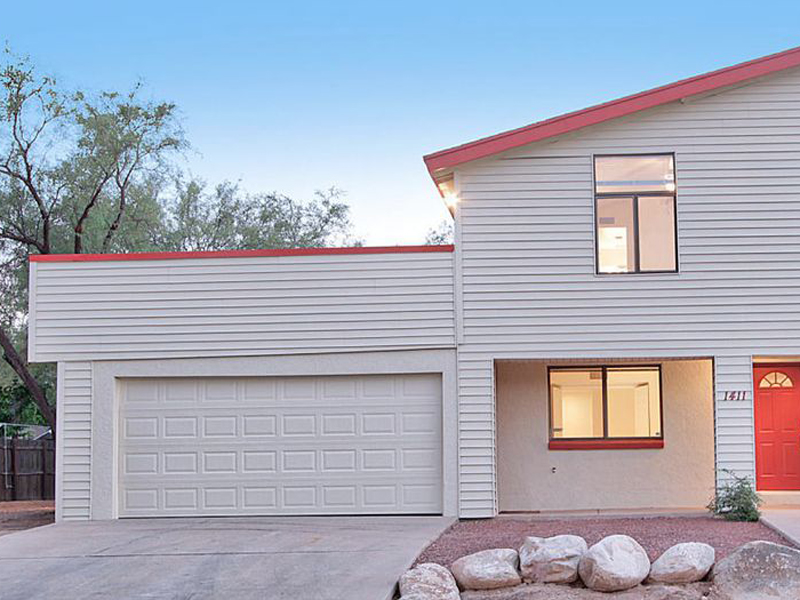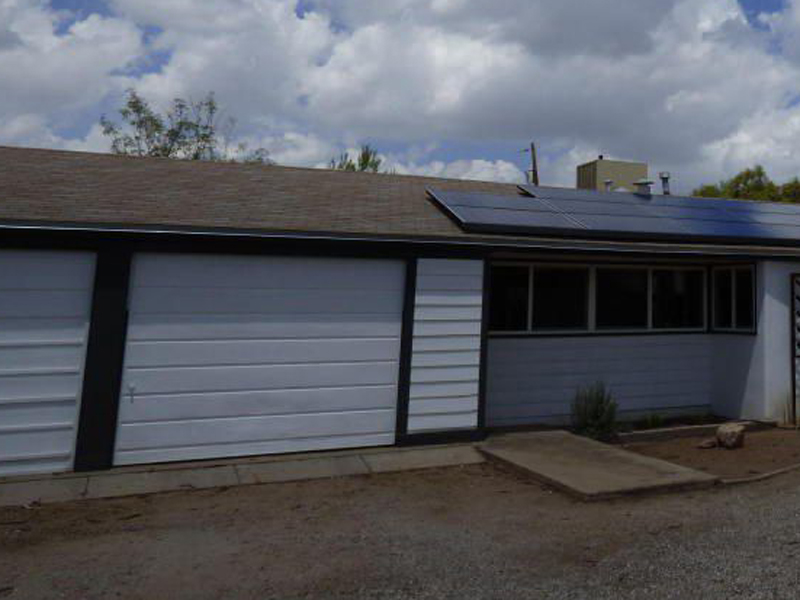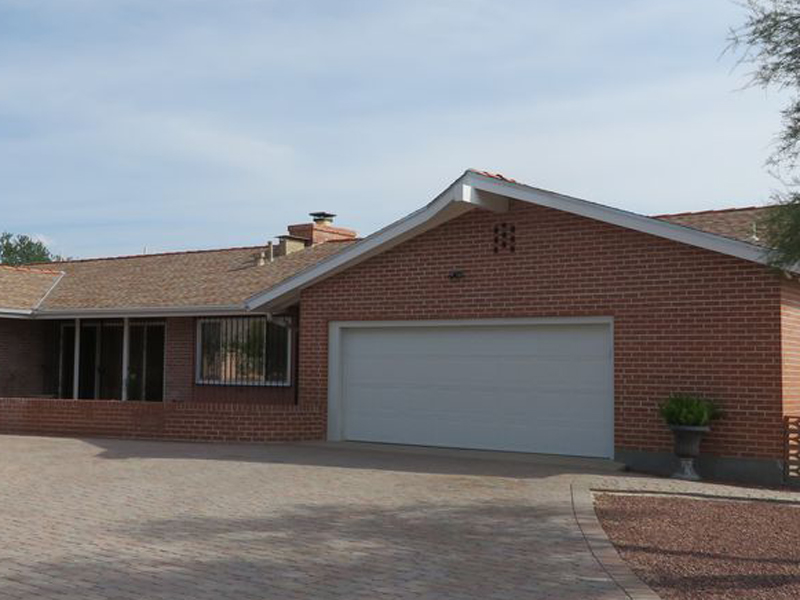Is Your Garage Door Stuck? Here's What to Do First
When your garage door will not open, start with these vital security checks before trying any fixings. First, ensure no one is standing near the door which cars are free from the opening. Search for apparent indicators of damages like busted panels, curved tracks, or hanging cables. If you see a snapped spring or severely damaged elements, stop instantly and call an expert—-- these repair services require specialized tools and know-how to take care of safely.

Inspect These 6 Things Prior To Calling a Professional
Prior to presuming you need expensive repair services, run through this quick diagnostic list that addresses most garage door problems:
-
Source of power: Verify the opener is plugged in and the outlet is functioning
-
Remote batteries: Change dead batteries in your remote control
-
Hands-on lock: Check if a person accidentally engaged the manual lock
-
Blockages: Seek debris blocking the door's path or sensing units
-
Emergency situation release: Ensure the red emergency situation cord hasn't been pulled
-
Circuit breaker: Verify the garage circuit hasn't tripped
These easy checks solve around 70% of garage door problems without calling for professional intervention.
10 Common Reasons Your Garage Door Won't Open Up
Understanding why your garage door opener isn't working aids you choose the appropriate solution. Below are the most constant causes house owners experience:
Dead remote batteries represent the simplest fix—-- when batteries die, the remote can not send out signals to the opener. Power failures or tripped breakers reduced electrical power to the motor. Busted springs prevent the door from raising properly and require immediate professional interest. Sensor imbalance causes safety systems to obstruct door procedure. Track obstructions stop rollers from relocating efficiently. Motor overload triggers automatic shutoffs when the opener finds resistance. Limit switch problems perplex the opener concerning door setting. Cable damage disrupts the training mechanism. Weather-related concerns affect door motion during extreme temperature levels. Component wear from age slowly reduces system efficiency.
Issue # 1: Dead Remote Control Batteries
When your wall surface switch works yet your remote does not, dead batteries are normally the perpetrator. The majority of garage door remotes make use of either 3-volt lithium or 12-volt alkaline batteries. Get rid of the back cover of your remote and examine the battery kind. Change with fresh batteries and check the remote. If it still doesn't work, you may need to reprogram it to your opener. Consult your opener's guidebook for particular reprogramming instructions, as the procedure differs by manufacturer.
Problem # 2: Power Supply Issues
Garage door power troubles often originate from loose links or tripped circuits. Examine that the opener is securely plugged into its electrical outlet—-- vibration can loosen connections over time. Test the electrical outlet with another gadget to verify it's working. Examine your home's breaker box for stumbled circuits, specifically if you've experienced tornados or power changes. GFCI outlets may have stumbled and require resetting. If the opener has power yet won't respond, the issue most likely lies somewhere else in the system.
Trouble # 3: Broken or Damaged Springs
Busted garage door springtimes are amongst one of the most dangerous parts to handle. If you hear a loud bang from your garage or see the door really feels incredibly hefty when trying to raise manually, a spring has likely broken. Torsion springtimes run horizontally above the door, while extension springs sit on either side. Never ever try spring fixings yourself—-- these components keep incredible stress that can create serious injury or fatality. Specialist substitute normally sets you back $150-$300 but ensures your security.
Issue # 4: Blocked Safety Sensors
Modern garage doors feature safety and security sensors that prevent closure when objects are discovered. These sensing units can stop the door from opening if they're filthy, misaligned, or obstructed by debris. Tidy sensing unit lenses with a soft cloth and ensure absolutely nothing blocks the unnoticeable beam of light in between them. Check that sensors are correctly aligned—-- most have sign lights that reveal link condition. Sensing unit troubles often settle with straightforward cleansing and modification.
Trouble # 5: Track Obstructions or Damage
Garage door tracks overview rollers as the door moves up and down. Dirt, debris, old oil, or small objects can jam the system. Evaluate tracks aesthetically and get rid of any obstructions with a brush or towel. Look for dents, flexes, or warping that can hinder smooth operation. Small track modifications are possible for useful property owners, yet substantial damages requires professional fixing to prevent further issues or security risks.
Issue # 6: Garage Door Opener Motor Issues
When the garage door motor runs but the door doesn't move, a number of issues could be accountable. The electric motor may be overloaded and shutting off as a safety measure. Gear wear, specifically in older devices, can prevent correct procedure. Chain or belt drive problems impact power transmission. If you listen to uncommon grinding, clicking, or humming sounds, quit utilizing the opener quickly. Motor repair work often cost greater than replacement, particularly for units over one decade old.
Detailed DIY Troubleshooting Overview
Follow this methodical strategy to garage door repairing while prioritizing security throughout the procedure:
Action 1: Evaluate the wall switch initially. If it functions however the remote check here doesn't, focus on remote issues. If neither jobs, check power supply.
Action 2: Check out the hands-on launch cable. If it's been drawn, the opener is disengaged from the door. Press the cart back to reconnect.
Step 3: By hand examine the door by disengaging the opener and attempting to raise the door by hand. It must relocate efficiently and stay in place when half-open.
Step 4: Examine noticeable components for damage, paying unique interest to springs, cords, and tracks.
Tip 5: Check all safety features including sensing units, restriction switches, and auto-reverse features.
Step 6: Test various controls (remote, wall button, keypad) to separate the trouble resource.
Constantly wear safety glasses and work handwear covers when carrying out examinations, and never effort repair services on springtimes or high-tension parts.
When to Call a Professional vs. DIY Solutions

Knowing when to call a garage door expert versus attempting DIY repair services safeguards both your safety and your pocketbook. Take care of these issues yourself: dead remote batteries, power supply problems, small track cleansing, sensing unit cleansing and positioning, and standard lubrication.
Never ever attempt these repair work yourself: springtime substitute or adjustment, cable television repairs, significant track realignment, electrical wiring concerns, opener motor replacement, or any type of repair including high-tension parts. Professional professionals have specialized devices, training, and insurance policy to handle dangerous fixings safely.
Consider fixing prices versus substitute prices, specifically for doors over 15 years old. Modern garage doors use far better safety and security features, power effectiveness, and dependability than older models.
Emergency Situation Garage Door Solutions
When you're stuck with a garage door that won't open up and need instant access, follow these emergency situation treatments:
Manual Operation: Draw the red emergency release cable to disengage the opener. This permits manual procedure but requires appropriate strategy to stay clear of injury. Raise the door gradually and evenly, using leg muscle mass rather than your back. A lot of household doors weigh 100-150 extra pounds, making them manageable for the majority of grownups.
Momentary Solutions: If the door opens by hand yet will not stay up, prop it open with sawhorses or clamps—-- never ever utilize your body or vehicles as assistances. For doors that won't shut totally, ensure the opening is protected if you must leave.
Emergency Service: Lots of garage door business use 24/7 emergency situation service for circumstances entailing safety and security problems, entraped cars, or complete system failings. While extra costly than regular service calls, emergency situation repair work provide immediate remedies when required most.
Security Caution: What NOT to Do
Garage door safety requires recognizing harmful repair work that ought to never be tried by house owners:
Never ever attempt to fix springtimes—-- they store sufficient power to cause fatal injuries when they snap or are incorrectly dealt with. Do not require a stuck door—-- this can damage the opener, tracks, or door panels, developing much more pricey issues. Stay clear of bypassing safety attributes—-- sensing units and auto-reverse systems avoid severe injuries and home damage.
Don't disregard odd noises—-- grinding, scuffing, or banging noises suggest problems that intensify over time. Never ever use the door if cables are frayed or broken—-- the door can drop unexpectedly. Don't attempt electrical repair services unless you're a qualified electrician—-- garage door openers use both 120V home existing and low-voltage control circuits.

Preventive Maintenance to Prevent Future Problems
Normal garage door maintenance prevents most typical issues and expands system life-span dramatically:
Monthly Jobs: Aesthetic evaluation of all elements, testing auto-reverse safety functions, inspecting and tightening hardware, and cleaning tracks and sensing units.
Quarterly Tasks: Lubricating all relocating get rid of suitable garage door lubricating substance, testing manual operation, and checking weather sealing.
Annual Jobs: Professional evaluation and tune-up, springtime change if required, and opener maintenance including belt or chain change.
Seasonal Tasks: Getting ready for weather condition extremes, examining insulation, and changing opener settings for temperature changes.
Regular maintenance costs much less than emergency situation repairs and guarantees reliable procedure year-round.
Garage Door Will Not Open Up FAQs
Why will not my garage door open with the remote however deals with the wall surface switch?
This usually shows dead remote batteries, signal disturbance, or the demand to reprogram the remote. Check batteries initially, then consult your opener manual for reprogramming guidelines.
Can I by hand open my garage door if the power is out?
Yes, draw the red emergency situation release cord to disengage the opener, after that raise the door by hand. Be prepared for the door's complete weight and lift with correct strategy to avoid injury.
How do I know if my garage door springtime is broken?
Signs consist of a loud bang from the garage, the door feeling exceptionally heavy when raising manually, noticeable voids in the spring coils, or the door just opening up a couple of inches before stopping.
Is it risk-free to utilize my garage door if it will not open up all the way?
No, partial procedure suggests mechanical troubles that might worsen suddenly. Quit making use of the door and have it inspected by an expert to stop additional damages or injury.
What should I do if my garage door opens up but will not close?
Inspect safety and security sensors for obstructions or imbalance, analyze the tracks for particles, and test the auto-reverse feature. If these do not resolve the problem, get in touch with a specialist.
Just how much does it set you back to fix a garage door that won't open up?
Costs differ commonly depending on the problem: battery substitute ($5-$10), specialist diagnosis ($50-$100), springtime substitute ($150-$300), or opener replacement ($200-$500).
Can weather affect my garage door's capability to open?
Yes, extreme cold can thicken lubricants and influence steel components, while warm can create expansion issues. Many issues solve as temperatures stabilize, yet consistent issues might need expert attention.
Why does my garage door open a couple of inches after that stop?
This typically shows damaged springs, restriction switch troubles, or track obstructions. The opener's safety features stop operation when resistance is discovered, stopping damage to the motor or door.
Obtain Specialist Assist for Complicated Problems
When DIY fixing doesn't fix your garage door troubles, professional technicians supply the expertise and tools needed for safe, long lasting repair services. Qualified experts diagnose problems accurately, use manufacturer-approved components, and provide service warranties on their job.
Professional solutions include: extensive system evaluations, springtime and wire substitute, opener repair work and replacement, track alignment and substitute, electrical troubleshooting, and emergency situation solution calls.
What to anticipate: in advance pricing, certified and insured specialists, same-day solution for many fixings, and follow-up maintenance referrals.
Most garage door firms use free estimates for significant repairs and can supply immediate options for immediate troubles influencing home security or automobile accessibility.
Getting Your Garage Door Working Again
A garage door that will not open up doesn't need to wreck your day or damage your spending plan. Begin with easy troubleshooting steps like examining power, changing batteries, and analyzing for noticeable blockages. Lots of issues have quick DIY services that recover regular operation within mins.
Nevertheless, acknowledge when expert assistance is necessary—-- particularly for spring-related concerns, electrical troubles, or complicated mechanical failures. Trying dangerous repairs yourself risks significant injury and commonly develops extra expensive troubles.
Regular upkeep stops most garage door problems and makes sure reputable procedure for years ahead. When troubles do occur, resolve them promptly to stay clear of more expensive repair work and keep your home's protection and convenience. Whether you need a simple battery substitute or complete system overhaul, options exist to get your garage door functioning efficiently once again.